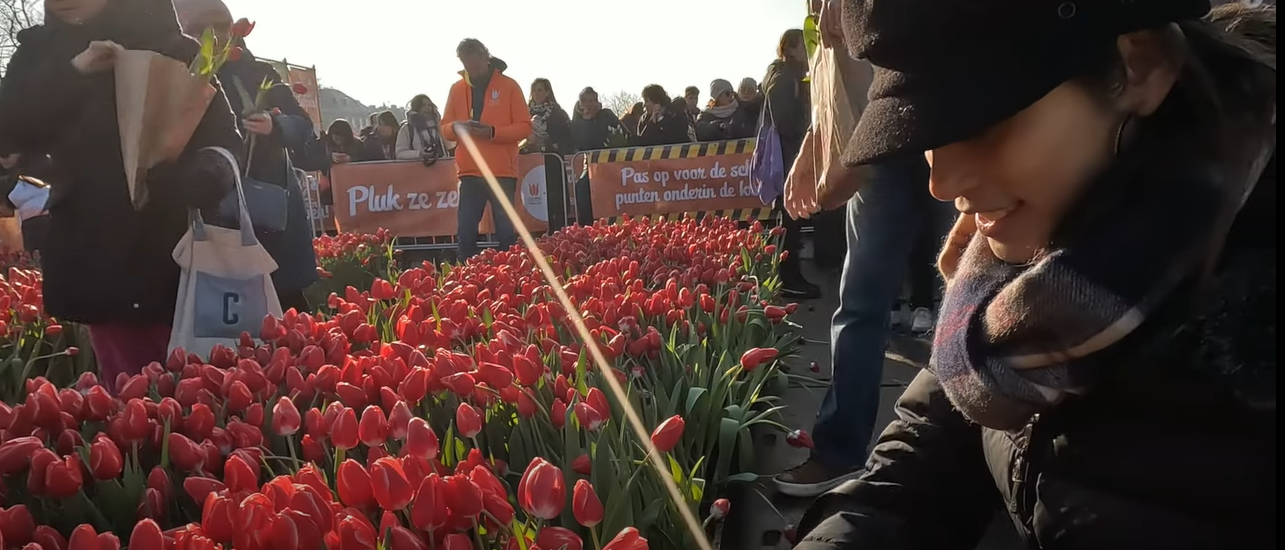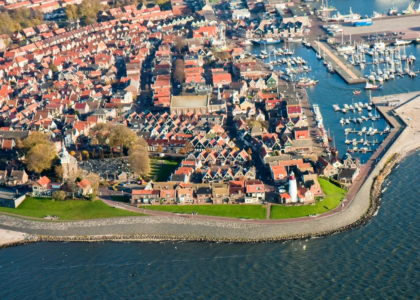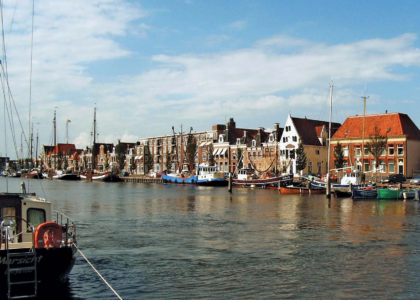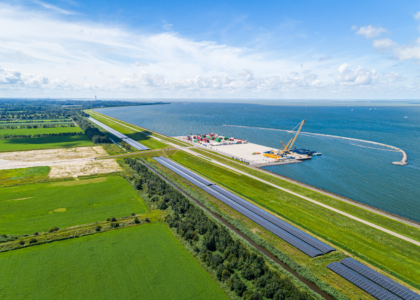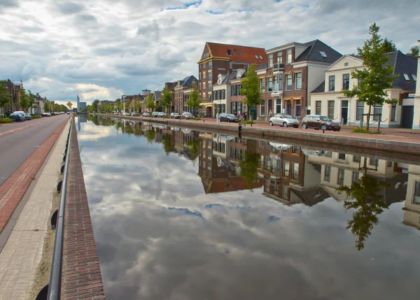Few spectacles in the world can rival the beauty and vibrancy of the Netherlands Tulip Festival. This annual event, rooted deeply in the country’s history and culture, paints the Dutch landscape with a riot of colors, drawing visitors from across the globe. This article aims to provide an in-depth exploration of this iconic festival.
Although tulips are not native to the Netherlands, the flower has found a place in the heart of the country and its people. The history of the tulip in the Netherlands is fascinating, filled with intrigue and passion.
The Introduction of Tulips in the Netherlands
Tulips were first introduced into the Netherlands in the late 16th century. Carolus Clusius, a botanist from the University of Leiden, brought them from the Ottoman Empire (modern-day Turkey). Clusius had established the Hortus Botanicus Leiden, one of the oldest botanical gardens in the world, where he grew tulips.
| Title | Description |
|---|---|
| The Phenomenon of Tulip Mania | Tulip Mania was a period in the Dutch Golden Age, during which contract prices for tulip bulbs skyrocketed. At its peak in 1637, some single tulip bulbs sold for more than ten times the annual income of a skilled artisan before suddenly collapsing. |
| The Enduring Legacy of the Tulip | Despite the burst of Tulip Mania, the tulip’s popularity in Dutch society did not diminish. Today, the Netherlands is the world’s largest producer of tulip bulbs, growing and exporting billions each year. The love for tulips has led to the creation of the Tulip Festival, a testament to the flower’s enduring influence in the country. |
The Geography of the Festival
The Netherlands Tulip Festival doesn’t occur in a single location but spans across various regions. Some are popular tourist destinations, while others are off the beaten path.
Keukenhof Gardens
Keukenhof Gardens, in Lisse, South Holland, is the epicenter of the Tulip Festival. Spanning an impressive 79 acres, Keukenhof showcases more than seven million flowers each year, with tulips taking center stage.
- The garden follows a different theme each year, influencing the designs of the flower arrangements and exhibits.
- Besides flower displays, Keukenhof hosts a range of events such as art exhibitions, parades, and concerts.
- Keukenhof is also home to the Oranje Nassau Pavilion, used for orchid and anthurium shows.
- An informative ‘Tulip Mania’ exhibition at the Juliana Pavilion provides an overview of the history of tulips in the Netherlands.
Flevoland’s Tulip Route
Flevoland, the youngest and most centrally located province in the Netherlands, boasts the most substantial tulip-growing region in the country. The Tulip Route in Flevoland is a highlight of the festival.
- The route offers more than 100 kilometers of trails, accessible by car, bike, or on foot.
- The path winds through fields dotted with vibrant tulip blooms, offering stunning views.
- The trail also features numerous pop-up shops selling tulip bulbs, fresh-cut flowers, and local produce.
Other Noteworthy Locations
While Keukenhof and Flevoland are major draws, other regions also offer striking tulip displays.
- Noordoostpolder: This region hosts the largest land area of tulip fields in the Netherlands. A driving route of approximately 100 kilometers through the area provides a stunning tulip viewing experience.
- Bollenstreek: Known as the ‘flower strip’, this area is renowned for its long stretch of flower fields, charming villages, and the beautiful Dutch coast.
Varieties of Tulips
More than 3,000 registered varieties of cultivated tulips exist today, and they come in a myriad of colors, shapes, and sizes. Each variety and color holds a specific meaning.
| Tulip Color | Meaning |
|---|---|
| Red | Love and Romance |
| Yellow | Cheerfulness and Joy |
| Purple | Royalty and Regal bearing |
| White | Purity and Innocence |
| Pink | Caring, Good wishes, and Affection |
The Festival’s Impact on Dutch Economy and Tourism
The Tulip Festival holds immense importance for the Dutch economy and plays a crucial role in the country’s thriving tourism sector. With the Netherlands being a leading exporter of tulips and attracting a large number of visitors during the tulip season, the festival’s impact is far-reaching.
Dutch Tulip Exports
The Netherlands has emerged as the leading global exporter of bulb flowers, with tulips being the most prominent among them. The country’s annual Tulip Festival and its extensive tulip exports, exceeding 2 billion units, solidify the Netherlands’ position as a major player in the international flower market.
- Export Volume and Market Leadership: The Dutch tulip industry has achieved remarkable success in terms of export volume and market leadership. Each year, the Netherlands exports over 2 billion tulips, making it the largest exporter of tulip bulbs in the world. This substantial export volume highlights the country’s dominant position in the global flower market.
- Tulip Festival: The Tulip Festival held in the Netherlands plays a significant role in promoting tulip exports. This annual festival celebrates the beauty of tulips and attracts tourists and flower enthusiasts from all over the world. The festival showcases a wide range of tulip varieties, providing an opportunity for tulip growers and exporters to display their products and establish business connections with international buyers.
- Global Market Presence: The Netherlands’ dominance in tulip exports is not limited to its local market but extends to the international arena. Dutch tulips are highly sought after in various countries due to their quality, variety, and unique colors. The country’s tulip industry has developed strong trade relationships with importers and wholesalers worldwide, enabling consistent and widespread distribution of Dutch tulips.
Table: Top Export Destinations for Dutch Tulips
| Rank | Country | Percentage of Tulip Exports |
|---|---|---|
| 1 | Germany | 30% |
| 2 | France | 15% |
| 3 | United Kingdom | 12% |
| 4 | United States | 10% |
| 5 | Russia | 8% |
- Export Process: The export process of Dutch tulips involves several stages, including cultivation, harvesting, grading, packaging, and transportation. Bulb growers in the Netherlands cultivate a wide variety of tulips to meet the diverse demands of international markets. After careful harvesting and grading, the tulip bulbs are packaged to ensure their protection during transportation. The Dutch tulip industry has a well-established logistics network that efficiently delivers tulips to various countries across the globe.
- Quality Control and Certification: The Netherlands places great emphasis on maintaining high-quality standards for its tulip exports. The Dutch Flower Bulb Inspection Service (Naktuinbouw) plays a vital role in ensuring the quality and phytosanitary compliance of tulip bulbs. They conduct inspections, issue phytosanitary certificates, and provide certification for exported tulip bulbs. This rigorous quality control system enhances the reputation of Dutch tulips in the international market.
- Future Outlook: The Dutch tulip industry is expected to continue its growth trajectory in the coming years. Advances in cultivation techniques, breeding programs, and the development of new tulip varieties contribute to the industry’s expansion. Additionally, the Netherlands’ expertise in tulip production and export, coupled with its strong market presence, positions the country to maintain its leadership in the global tulip market.
Economic Impact
The festival’s economic impact extends beyond the flower industry, benefiting various sectors within the Dutch economy. Some of the notable contributions include:
- Employment: The festival generates employment opportunities across multiple sectors, such as agriculture, hospitality, transportation, and retail. These sectors experience increased demand for labor during the festival period, stimulating job creation and economic growth;
- Agriculture: The tulip industry supports a vast network of growers, distributors, and suppliers. The festival’s popularity drives demand for tulips, thereby boosting the agricultural sector and related businesses involved in tulip production;
- Retail and Hospitality: During the festival, local businesses, including florists, restaurants, cafes, and hotels, experience a surge in customers. The increased footfall generates higher revenues, contributing to the overall economic prosperity of these establishments;
- Tourism-related Spending: The influx of tourists during the Tulip Festival results in increased spending on accommodation, transportation, food, shopping, and entertainment. This additional expenditure bolsters the local economy and supports small businesses.
Tourism Impact
The Tulip Festival acts as a magnet for tourists from around the world, attracting hundreds of thousands of visitors to the Netherlands during the tulip season. Here are some notable aspects of its impact on tourism:
- International Visitors: The festival’s reputation draws tourists from various countries who specifically visit the Netherlands to witness the vibrant display of tulips. These visitors contribute to the growth of the tourism sector by spending on accommodation, dining, transportation, and other tourism-related activities;
- Domestic Tourism: The Tulip Festival also appeals to domestic tourists within the Netherlands. People from different regions of the country plan trips to witness the blooming tulip fields, supporting local tourism and stimulating the economy;
- Cultural Exchange: The festival provides an opportunity for cultural exchange, as visitors from different parts of the world come together to experience Dutch traditions, heritage, and the beauty of the tulip fields. This interaction fosters global understanding and promotes cultural tourism.
Conclusion
To truly appreciate the Netherlands Tulip Festival, it’s crucial to understand its historical context, cultural significance, and the sheer variety and splendor of the tulips on display. As an emblem of Dutch heritage, the festival offers visitors a unique opportunity to immerse themselves in the rich culture and beauty of the Netherlands.
FAQ
Most locations have implemented health and safety measures, including mask requirements, social distancing, and limited capacities. Please check the official websites for the most accurate and up-to-date information.
Yes, many companies offer guided tours. Some focus on the gardens and tulip fields, while others incorporate Dutch cultural experiences.
Visitors are urged to respect the tulip fields. While it’s tempting to walk amongst the flowers, this can damage the bulbs, affecting future growth. Always stay on the designated paths.

